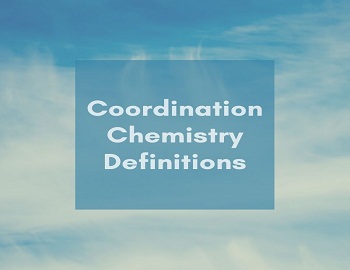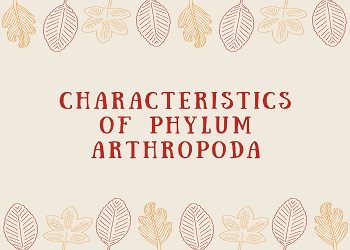Table of Contents
Coordination Chemistry Definitions:
Complex Ion:
It is an electrically charged species (positively or negatively) in which the central metal atom or ion is surrounded by a suitable number of ligands. Example-
- [Ni(NH3)6]2+
- [Co(NH3)4]3+
- [PtCl6]2-
- [Ag(CN)2]–
- [Fe(CN)6]4-
- [Fe(C2O4)3]3-
Coordination Sphere:
The part of the complex containing the central ion and coordinated groups is called the inner coordination sphere or coordination sphere or coordination shell. It is represented by enclosing the central ion with its coordinated groups in a square bracket. The portion present outside the square brackets is called the ionisation sphere. For example in the complex [Cu(NH3)4]SO4, the part [Cu(NH3)4]2+ is called the coordination sphere and SO42- ion is called the ionisation sphere. The species present in the coordination sphere are non-ionisable while those present in the ionisation sphere are ionisable.
Coordination Number:
The total number of ligands attached to the central metal atom in the coordination sphere is called the coordination number of the metal atom. For Example coordination number of-
- Pt in K2[PtCl6] is 6.
- Ni in [Ni(NH3)4]Cl2 is 4.
- Pt in [Pt(NH3)3Cl3]Cl is 6.
- Fe in [Fe(C2O4)3] is 6.
The most common coordination numbers are 4 and 6 but in most of the ions, it varies with the ligand.
Oxidation Number (or Charge or Central Metal Ion):
The charge on a complex is the sum of the charges on the central metal ion and its surrounding ligands. Example in the complex [Co(en)2Cl(ONO)], the charge on the central metal ion (Co) may be calculated as under.
Let charge on Co = x, charge on ethylene diamine = 0, charge on Cl = -1 and charge on ONO = -1.
Therefore, x + 2 x 0 + (-1) + (-1) = 0 or x + 0 -1 -1 = 0 or x-2 = 0 or x = 2.
Thus the oxidation number of Co is +2.
Similarly, the oxidation number of-
- Pt in [Pt(NH3)6]Cl4 is +4.
- Fe in Fe4[Fe(CN)6]3 is +2.
- Ni in Ni(CO)4 is zero.
- Hg in Na[Hg(CN)2] is +1.
Chelate and Chelating Ligand:
The word “chelate” is derived from the word “chellos” which means “crab”. When a bidentate or a polydentate ligand is attached by two or more donor atoms to the same central metal ion and forms a ring structure, the ligands is called chelating ligand. The cyclic complex is formed is called chelate. Example Ethylene diamine is a bidentate ligand and it can coordinated from the two donating site to the central metal say ‘Cu’.

Chelating ligands form more stable complexes than the monodentate analogs. This is known as the Chelating effect.
Larger the size of the ring, larger will be the stability of the coordination complex and the effect is known as macrocyclic effect. Chelates are generally very stable. Haemoglobin, chlorophyll, vitamin B12 are chelates of biological importance.
Effective Atomic Number or EAN:
In order to explain the stability of complexes, Sidgwick proposed the effective atomic number (EAN) theory. According to this theory, only those complexes are stable in which the EAN is equal to the atomic number of the next noble gas. It is the resultant number of electrons with the metal atom or ion after getting electrons from the donor atoms of ligands. It is given by the formula.
EAN = [Atomic Number of CMA] – [Oxidation Number of CMA] + 2 x [Coordination Number]
Where CMA = Central Metal Atom.
Example-
- K4[Fe(CN)6] = 26 – 2 + 2 x 6 = 36
- [Co(NH3)6]Cl3 = 27 – 3 + 2 x 6 = 36









Comments (No)